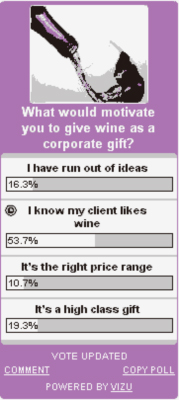What’s New in Banner Advertising? Consumer-Generated Content, Targeting and 3D Virtual Worlds
Last month we focused on the new levels of interactive functionality available to marketers using banner advertising. But there are many other interesting developments in the world of banner ads. Here is a round-up of new techniques that marketers can use to make their banners more targeted, more engaging, and more productive.
Just for some background, let’s look at banner ad spending trends. According to TNS Media Intelligence, U.S. marketers spent $7.2 billion online in the first nine months of 2006, a 17.9% increase over 2005. Not including search, Internet marketing comprises 6.6% of total ad spending, up a full percentage point from 2005.
In 2007, 86% of advertisers say they plan to increase their online investment, according to the Jack Meyers Media Business Report. Myers expects the new media sector—including online, video games, satellite radio etc.—to grow 27% this year.
So, what are some of the new things marketers can do with banners?
Hosted Conversations
Everyone is raving about the power of consumer-generated media like blogs, wikis and social networking. Now the PR firm Edelman has figured out a way to migrate the online consumer conversation into banner ads, called “Hosted Conversations.” The new service uses the RSS feed provider NewsGator to gather up snippets of consumer discussion about an advertiser’s brand that may have appeared in blogs, video and photo sites, and even mainstream media. Edelman subject-matter experts then evaluate the content, and selects the most interesting snippets for inclusion in the ad.
As the ads run, viewers may contribute their own additional comments on the subject. The idea is to engage the customer in the conversation, and to interact with the brand in a new way. Customer posts are moderated (meaning, edited) by Edelman to keep the brand discussion from getting too crazy. The service was launched in December 2006, and is being first made available to Edelman clients on a category-exclusive basis.
Domain-name targeted ad serving

A Vizu poll to gain insight into consumer
attitudes toward wine as a corporate gift.
Advertisers are always looking to reduce waste and ensure that their ad is being seen by the right prospect. Sophisticated B-to-B website publishers, like the online editions of Forbes, Business Week and The Wall Street Journal, are offering advertisers a way to serve their ads only to visitors from particular companies. When company employees surf the Net using their office computers, the sites they visit can identify their company domain name.
The consulting giant Accenture used this capability successfully to target a mere 30 to 50 prospective clients. Accenture wanted to sell $5 to $10 million technology outsourcing deals to firms among the top 100 electronics and technology corporations. They made their target selections, and provided the list to several business sites, who then served up the Accenture outsourcing ad only when visitors from those top companies appeared.
“We got great results from this campaign,” says Marten G. van Pelt, marketing director for the Accenture technology practice. “We negotiated a CPM, or a flat fee, and of course the cost was higher than normal ad serving, but we had 100% control of the targeting and zero waste. I’d say this kind of targeting is worth it, no matter what the price.””
Market research generated from inside the banner
Vizu is a new tool intended to make market research convenient, fast, inexpensive and available to marketers who have no special training in research methods. The marketer can whip up a simple survey at the Vizu site, and then select among various target audiences and price options. Vizu posts the research banners at its network of blogs and opinion sites, and the marketer gets the answers in a matter of days.
Publishers in the Vizu network maintain approval rights, and receive a fee for running the ads. The poll results are displayed immediately, so consumers tend to consider them enjoyable and informative content. Marketers can use the ads for evaluating creative, measuring brand perception, gathering consumer insight—whatever research is needed. The total cost runs around $200 to $500—an amazing deal for primary research results.
3D billboards in the land of Microsoft maps
Microsoft’s 3-dimensional Virtual Earth environment, accessible from live.com, now offers advertisers the chance to post billboard-style ads in 15 of its virtual cities, including San Francisco, Boston, Las Vegas and Dallas. Microsoft plans to add more cities to the list over time.
In the past, map sites have made advertising available, but the units could only sit on the border of the site, or in pop-up balloons “pinned” to a point on the map. With the new technology, which Microsoft acquired when they bought the in-game advertising company Massive, advertisers can place their ads on the sides of buildings, on 3D billboards, or even hovering in space over the city.
The first advertisers to try the environment were Fox theaters, Nissan and the real estate firm John L. Scott. The program is still in pilot mode, but holds exciting promise for the future.


